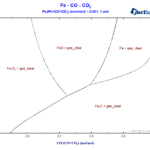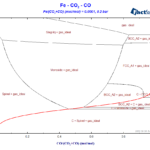How can we accelerate the transformation of the iron and steel industry using materials informatics? Computational thermochemistry is fundamental for the transition to sustainable metallurgy. You need to understand thermodynamics to create process models – or to discover new alloy compositions for advanced engineering applications. We face challenges such as the decarbonization of steel metallurgy in primary production and recycling, as well as the development of sustainable alloys that are recyclable from the start and contain a higher proportion of scrap.
Ömer Büyükuslu, data engineering expert at GTT, shared two case studies at the scientific discussion meeting “Sustainable metals: science and systems” hosted by The Royal Society in London: Implementing the addition of hydrogen or ammonia to evaluate the heat balance of a Midrex reactor and the design of a hard phase alloy using a high-throughput ‘materials informatics’ approach. We are now pleased to present them in our blog!
Computational thermochemistry for sustainable metallurgy
The Royal Society, London, 05 – 06 February 2024
Sustainable metals: science and systems
Ö. Büyükuslu, F. Tang, B. Reis, F. Herrig, F. Yang, C. Früh, P. Keuter, M. to Baben
Thermochemical databases = Map of chemical space
ChemApp is a programmer’s library that permits the calculation of complex, multicomponent, multiphase chemical equilibria and their associated extensive property balances. With the Equi2Py module in FactSage 8.3, you can effortlessly set up thermochemical systems and smoothly transition to the ChemApp for Python scripts, reducing the complexity of setting up thermochemical experiments for anyone, even those with no programming experience.
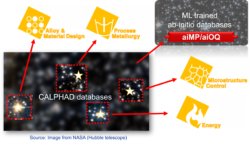
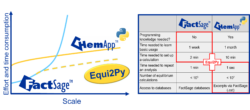
Metallurgical process modelling including full solution thermodynamics
Stream calculations in ChemApp for Python
Metallurgical processes undergo modifications, influencing investment decisions involving reactors that have not been utilized in such a manner before, especially in plant flowsheets. Our first study model demonstrating the implementation of adding hydrogen or ammonia to evaluate the heat balance of a Midrex reactor. This modeling exercise simulates the transition from using pure methane reformer gas to a combination of hydrogen, methane, and ammonia.

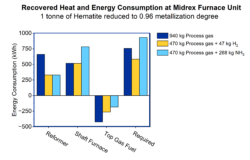
Integration of direct reduction furnaces into the plant flowsheet requires considering certain data for estimation or simulation. Stream calculation in ChemApp for Python allows setting initial conditions in addition to general boundary conditions. This enables quick calculation of heat balances and modeling scenarios like mixing hot air with a cold aqueous solution.
Process informed alloy design
High throughput screening with ChemApp
In our second case study we showcase design of a hard-phasing alloy using a high-throughput “materials informatics” approach. We started with a sample space of 700.000s based on a composition range of a reference alloy that involves 12 elements. As a result of high throughput screening, we end up with 168 promising compositions. Alloy compositions that passes the thermochemical screening criteria are evaluated based on the criticality of the alloying elements and a sustainability index. The goal is to design a sustainable alloy that is cheaper than the benchmark material while maintaining structural performance. Successful alloy candidates undergo experimental analysis by our project partners. At the end, experimental findings align well with the predicted results, providing corroborating evidence.
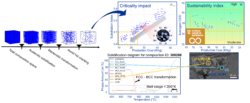
| Property | Predicted | Calculated |
|---|---|---|
| Liquidus T (°C) | 1209 | 1195 |
| Solidus T (°C) | 1127 | 1162 |
| Tms (°C) | 205 | 207 – 228 |
| Production cost (€/kg) | 22 | – |
| Density (g/cm³) | 7.8 | – |
765,000 compositions were assessed based on materials and process criteria, resulting in the identification of 168 promising hardfacing alloy compositions after high-throughput screening.
Download the conference poster here
Start exploring ChemApp for Python right away
For example with our free Webinar: “ChemApp for Python” – The Beginning of an Exciting Journey. Along with the video of the webinar, this site contains more useful resources such as links to the Installation guide, further Examples on GitHub, the Cheatsheet and the Documentation for ChemApp for Python.
Learn more about the thermodynamics of iron reduction using C, H2 or mixtures thereof
Read our series of blog posts about Constructing a Blast Furnace Diagram with FactSage:


